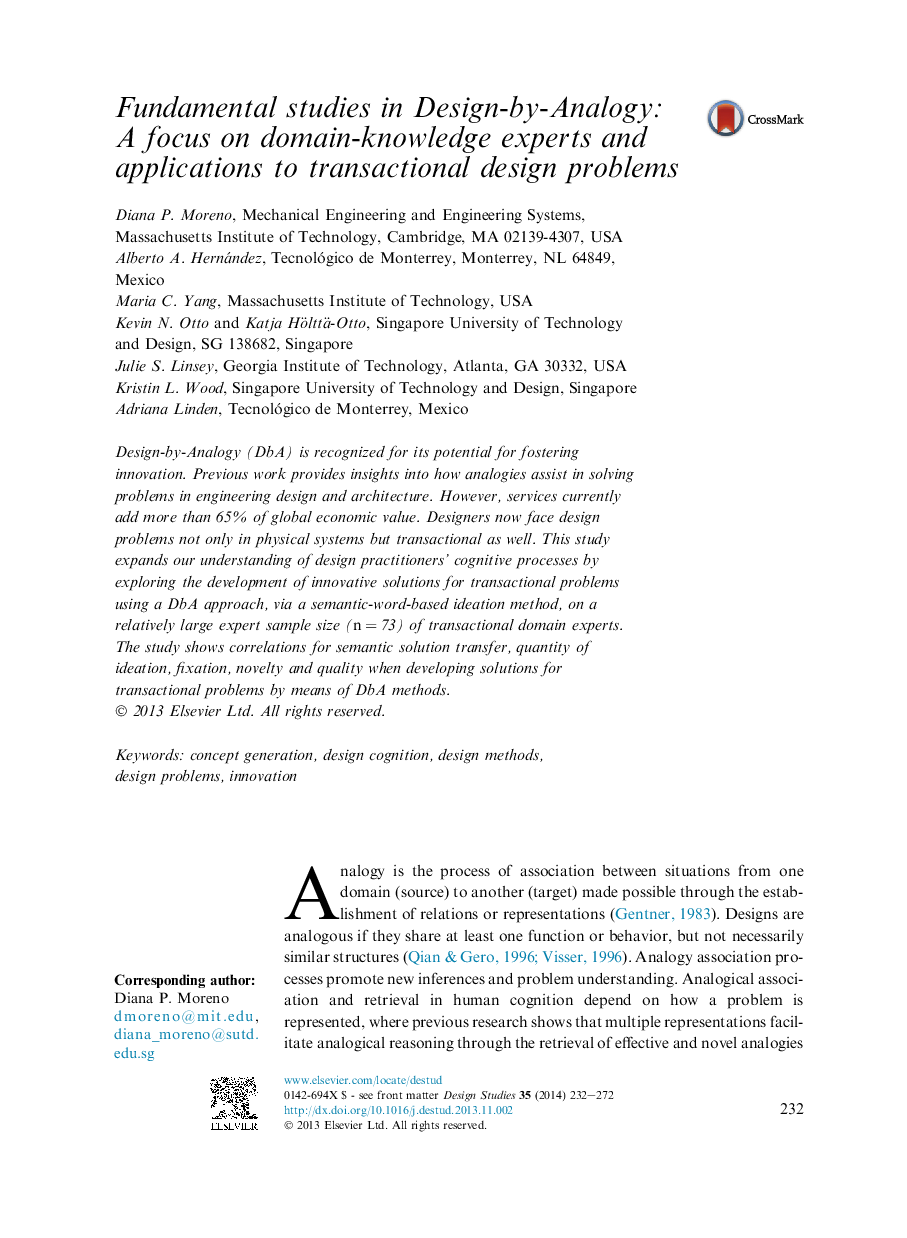| Article ID | Journal | Published Year | Pages | File Type |
|---|---|---|---|---|
| 261600 | Design Studies | 2014 | 41 Pages |
•We explored ideation applying Design-by-Analogy (DbA) in transactional problems.•First domain-knowledge expert study (n = 73) for a DbA semantic-based ideation method.•High novelty and lower fixation levels were found using proposed DbA method.•Positive quality–novelty correlation that can be mapped to innovative solutions.•We explore DbA methods transferability to ideation stage of transactional problems.
Design-by-Analogy (DbA) is recognized for its potential for fostering innovation. Previous work provides insights into how analogies assist in solving problems in engineering design and architecture. However, services currently add more than 65% of global economic value. Designers now face design problems not only in physical systems but transactional as well. This study expands our understanding of design practitioners' cognitive processes by exploring the development of innovative solutions for transactional problems using a DbA approach, via a semantic-word-based ideation method, on a relatively large expert sample size (n = 73) of transactional domain experts. The study shows correlations for semantic solution transfer, quantity of ideation, fixation, novelty and quality when developing solutions for transactional problems by means of DbA methods.
